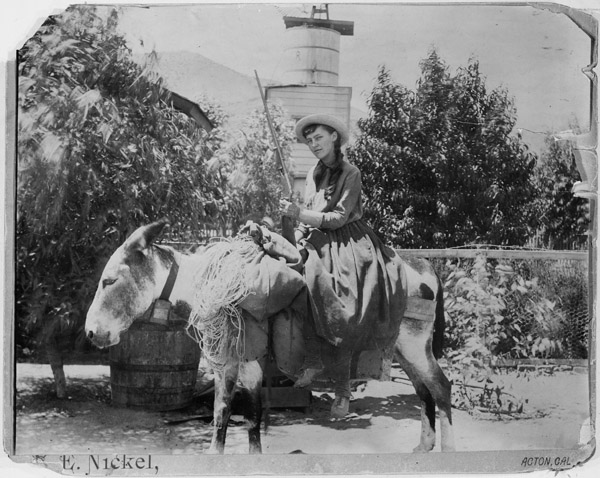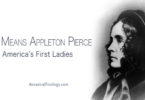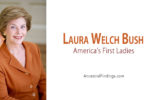Lou Henry was born on March 29, 1874, in Waterloo, Iowa. She would marry Herbert Hoover, the 31st President of the United States. Her parents were Charles Henry and Ida Weed, and her father was a banker. She had one sibling, a younger sister named Jean. Lou’s parents moved to California when she was young, and she lived in the California towns of Whitter and Monterey.
Growing up, she was known as a tomboy, and her father often took her camping in the California hills. She learned to ride horses with great skill and was also a hunter and taxidermist. Additional early hobbies included collecting rocks and minerals, as well as mining.
Lou attended the University of California, Los Angeles, but later transferred to San Jose State University, where she graduated with a teaching certificate in 1893. She went on to attend Stanford University, where she was the school’s first (and only, at the time) Geology major. She obtained her Bachelor’s Degree in Geology in 1898.
Her natural athletic abilities were on full display during her college career. At Stanford, she was a member of the Basketball Committee, a member of the Archer Club, and a Vice-President of the Women’s Athletic Association. To say she enjoyed physical activities was an understatement. Being active was her passion.

It was while attending Stanford that she met her future husband, Herbert Hoover.
However, they met before Lou graduated, and Herbert left for Australia to pursue a career in Engineering while Lou was still at school. Herbert was not keen on waiting to get married, though. The year Lou graduated, Herbert proposed to her from Australia, via telegram. Lou accepted the proposal right away and sent Herbert a telegram back telling him so.
They married on February 10, 1899, at Lou’s parents’ house in Monterey, California. Lou was raised as an Episcopalian but had decided to become a Quaker by the time of her marriage to Herbert. This was because Herbert was a Quaker from birth. Since there was no Quaker meeting house in Monterey, she and Herbert were married in a civil ceremony at her parent’s house by a Roman Catholic priest.
The day after getting married, the Hoovers set sail for China, where they honeymooned and lived for the next year and a half. They stayed for four days at the Astor Hotel in Shanghai for their honeymoon, then moved to a large house in Tianjin. Herbert’s job as an engineer often required him to travel through remote and dangerous regions. Lou always accompanied him.
They were there in China together during the infamous Boxer Rebellion. Lou served guard duty during the rebellion, in which foreigners living in China were targeted, getting around on a bicycle to complete her rounds. She also helped procure fresh milk for children during the rebellion, assisted in erecting barricades, tended the wounded, and learned to use a pistol. Though their home was riddled with bullets from gunfire during the rebellion, the Hoovers remained unharmed.
Lou learned to speak Mandarin Chinese while in China and is so far the only First Lady to be fluent in an Asian language. She would often speak to Herbert in Mandarin when they were in the White House together, so any eavesdroppers would not understand their private conversations.
However, Mandarin was not the only foreign language Lou knew. She was also fluent in Latin. She and Herbert collaborated together on translating a 16th-century encyclopedia of mining and metallurgy that was originally in Latin; their translation was published in 1912, and it is still the standard English translation of that work.
Lou received an official decoration from King Albert I of Belgium in 1919 for her work helping Belgian refugees to the United States during WWI.
Herbert’s engineering activities gradually gave way to political ones, and he became President of the United States in 1929, which was the first political office he actually ran for and was not appointed to. In keeping with the tradition established by Woodrow Wilson, the Hoover’s had no inaugural ball. Lou also subdued the more tomboyish aspects of her personality to fit what she thought the American public expected in a First Lady….quiet femininity. She based most of her actions as First Lady on what she thought the public would prefer.
She became the 1st First Lady to give regular radio addresses to the nation, which kept her and Herbert in the spotlight during the Great Depression, which started shortly after Herbert’s inauguration, and let the nation know that she and the president were doing what they could to help the people of the United States during that difficult time.
She did not have her own radio program but appeared as a guest speaker on other programs several times as First Lady. She not only spoke about the Great Depression but also about the Girl Scouts and volunteerism. Those who heard her speak said she had an excellent speaking voice, and also that she spoke with confidence.
Not only did she begin traditions such as this one as First Lady, she ended others. The most significant thing she ended was the traditional White House New Year’s Day reception, which had been introduced more than a century prior by second First Lady Abigail Adams.
Lou was instrumental in overseeing the design and construction of a rural presidential retreat in Madison County, Virginia. It was called Rapidan Camp and was the first presidential retreat. While it was only used by the Hoovers, it became a precursor to the better known Camp David.
Lou was national president of the Girl Scouts twice… once before becoming First Lady, and once after.
She and Herbert had two sons, Herbert, Jr. and Allan Hoover. Both sons eventually had careers in engineering, though Allan started as a financier.
Lou had a heart attack at age 69 and died in 1944. He was first buried in Palo Alto, California. When Herbert died twenty years later, he was buried in West Branch, Iowa, and Lou was moved to be re-interred beside him.






